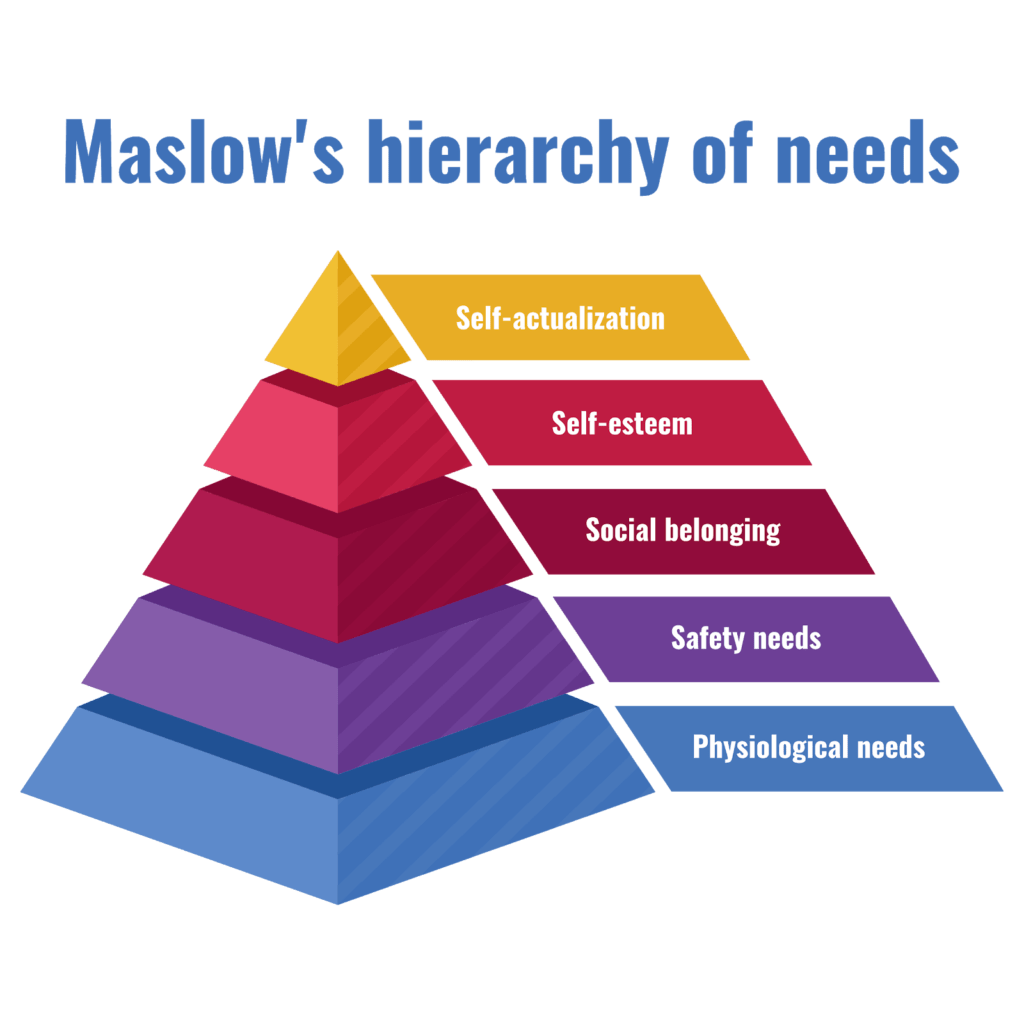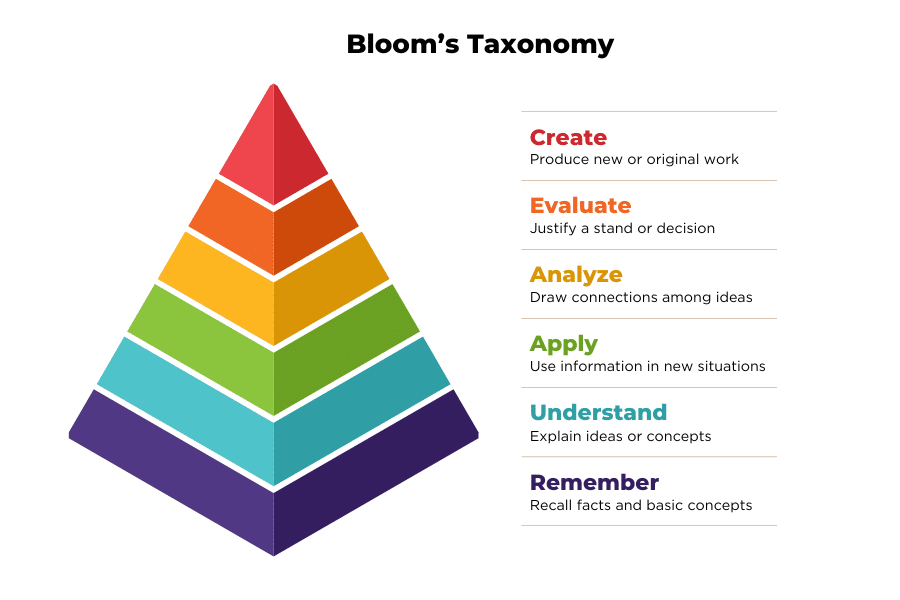There are numerous factors that can affect a student’s desire and ability to learn, including family expectations, learning differences, and socioeconomic status. However, a supportive educational environment can be key for student motivation and success. Students who feel safe – socially, emotionally, and physically – can learn, grow, and thrive, regardless of the challenges they face. “Maslow before Bloom” is a common phrase in educational circles, describing the conditions that must exist for students to be prepared for and receptive to learning.
What Does “Maslow Before Bloom” Mean?
Decades of research and practice in the field have given rise to many educational theories. Perhaps the most well-known is Maslow before Bloom.
In 1943, Abraham Maslow, an American psychologist, proposed a hierarchy of needs that established a ranking order of basic human needs. The foundation of this hierarchy is physiological needs such as food, water, shelter, clothing, and sleep. Once those needs are met, individuals next need a sense of safety and security, which can be found in good health, economic security, and social well-being. Building on top of that are needs for belonging, including friendship, family relationships, and a sense of connection. Achieving those three levels enables individuals to develop self-esteem, which includes attributes like self-acceptance, self-worth, and self-respect. Finally, having achieved each level in the hierarchy allows for learning and development, both academic and psychological.

More than a decade later, a committee of educators established a series of hierarchical models used to categorize educational learning objectives. Named after Benjamim Bloom, who oversaw the committee, Bloom’s Taxonomy is a framework of educational objectives used by educators everywhere. Like Maslow’s pyramid of needs, Bloom’s Taxonomy begins with a basic foundation and builds as each level is achieved. As an individual moves through the stages defined in the framework, they achieve learning and mastery of knowledge.

“Maslow before Bloom,” then, is the premise that an individual’s basic psychological needs must be met before learning can occur. A safe and supportive educational environment provides the conditions in which a student can be prepared to learn.
How SEL & PBIS Fit Into Maslow Before Bloom
Social-emotional learning (SEL) and Positive Behavioral Interventions and Supports (PBIS) play essential roles in fostering a supportive educational environment, particularly in the context of Maslow before Bloom. Maslow’s hierarchy emphasizes the significance of fulfilling basic human needs before cognitive functions can be addressed. Together, SEL and PBIS form the foundation of a safe and supportive learning environment. Let’s take a closer look at this process:
Maslow: Physiological Needs & Safety
The base of Maslow’s pyramid addresses basic human needs, including food, shelter, clothing, health, and safety. SEL programs target these foundational needs through the promotion of emotional regulation, interpersonal skills, and a sense of safety within the school community. Within SEL, these fundamental aspects are the bedrock upon which students can build an academic foundation.
Maslow: Belonging & Self-Esteem
Once basic physiological and safety needs are met, the next levels of Maslow’s pyramid are belonging and self-esteem. PBIS aligns with these needs by establishing a positive and inclusive school culture, in which diversity is accepted and achievement is encouraged. Through recognition of positive behaviors, PBIS helps to foster a sense of community and helps to fulfill students’ needs for belonging. In this educational environment, students are better able to learn and interact positively with one another. SEL complements this stage by helping students to develop a strong sense of self as well as positive interpersonal relationships. This integration of SEL and PBIS lays the groundwork for students to engage more effectively in academic pursuits.
Maslow: Self-Actualization
The pinnacle of Maslow’s pyramid is the need for self-actualization, in which an individual is able to realize their full potential. Here, Bloom’s Taxonomy aligns by emphasizing higher-order cognitive skills such as analysis, synthesis, and evaluation. In enhancing self-awareness and interpersonal skills, SEL equips students with the emotional intelligence necessary for effective collaboration and communication. PBIS emphasizes positive behavior and supportive school climate, creating an environment in which self-actualization is possible.
Encouraging Student Social-Emotional Well-Being and Academic Success
FREE Guide
Together, SEL and PBIS create a strong foundation for learning by establishing an environment for students’ social and emotional well-being, as outlined in Maslow’s Hierarchy of Needs. Once established, this foundation enables educators to apply Bloom’s Taxonomy to encourage successful academic learning. This holistic approach not only fosters academic success but also nurtures well-rounded individuals capable of realizing their full potential.
Navigate360 enables districts and schools to positively impact social-emotional learning, school culture and climate, and critical life skills with Suite360 for Students and PBIS Rewards. Download our comprehensive guide to SEL and PBIS to learn how you can help create a ripple effect of positivity for students, teachers, and the school community as a whole!




